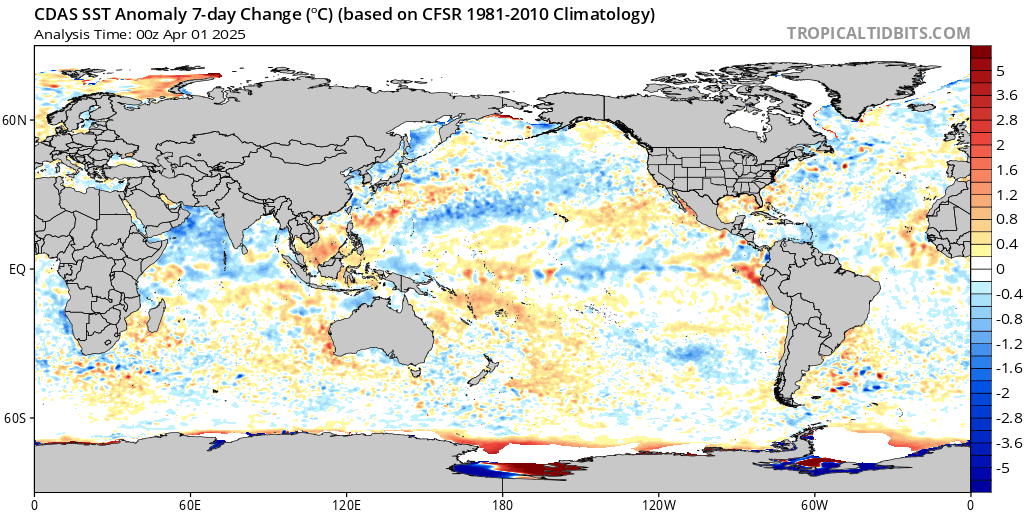NotSparta wrote:Shell Mound wrote:Most of the cooling in SSTs over the MDR and Caribbean has occurred since 20 April, per Tropical Tidbits’ data. I used ESRL’s plotting and analysis page to compare the change in MSLP, SST, and precipitation-rate (mm/h) anomalies during the period 20 April–1 May vs. the first nineteen days of April. I examined the region between 45°S–45°N and 120°W–40°E. Based on ESRL’s output, I found no significant change in any of these variables over the MDR and Caribbean, so USTropics’ explanation as to the cooling does not seem to hold, at least based on ESRL’s data. Therefore, the significant cooling is likely related to the AMO rather than convection, stronger high pressure, or other factors.
That's not how it works, the AMO can't just magically cool down the MDR. It needs help from other sources like trade wind variability or insolation fluxes. Problem is, the data isn't perfect. The SST data will have problems, missing areas and biases. In addition, the ESRL data isn't perfect as well, so it could be missing some things too. More likely there was a trade wind outbreak or a fall in insolation (SAL would do it and also make SST datasets overdo the fall). AMO variations are much more gradual than this, there have been tons of short term crashes like this even in the peak of the +AMO period.
Based on satellite data, the recent cooling does appear to be largely related to a recent, significant SAL outbreak—well within seasonal norms. If anything, the SST signature over the subtropical and even part of the far North Atlantic has become significantly more favourable over the past several weeks, with the overall look being much closer to a budding +AMO than it was a few months ago. Also, one can note a long-term southward shift in the warm tongue north of the MDR. So if one discards the recent SAL-related cooling over the MDR and Caribbean, the actual evolution over the past several weeks, coupled with the slow but steady +SOI trend and the persistent +IOD (hence enhanced rainfall over the equatorial Sahel due to a strong African monsoon), does not augur well for those hoping for an average or slightly-above-average Atlantic season. Indications are that we may well end up with La Niña conditions and a corresponding -PDO by the peak of the Atlantic season. So the risk of a hyperactive season with steering currents favouring landfalls seems to be increasing.









